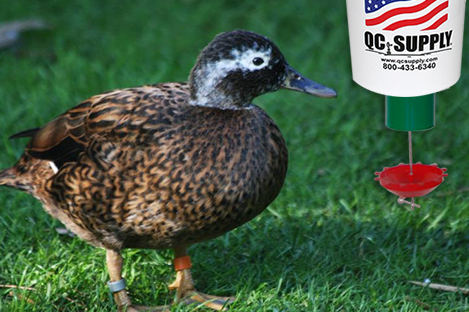
Laysan duck was named by Lionel Walter Rothschild in 1892, after Laysan Island, one of the Northwestern Hawaiian Islands. It is a highly behaviorally and genetically unusual species, a member of the mallard clade of dabbling ducks. This duck was first reported on Lisianski Island in 1828. A recent study suggests they evolved from an East Asian, southern hemisphere ancestor of mallards, not from stray migratory Mallards (Anas platyrhynchos) as had been reported earlier. Laysan ducks in captivity have lived to the age of eighteen while wild ducks have been known to live to the age of twelve years.
Laysan ducks are between 15 and 17 inches long. They are brown with a bright green-blue to purple speculum and have a white prominent ring around their eyes. The bill is short and spatulate in both males and females of this species. However, the bill on the males is dark green with variable black blotching in males, and dull orange with variable black blotching in females. Older laysan ducks have extensive white feathering is common on the head and neck which is called Leucistism. Both sexes have orange legs and feet.
It is very important to keep rats and wild birds away from the duck feed to prevent the onset of diseases. The PECk-O-MATIC Automatic Duck Feeder discourages vermin onto the site. Crumble can be provided through either the 3/8 inch or ½ inch regulator disc. If the feed is crumble, pellet, wheat, oats, cracked corn, peas or barley, the ½ inch regulator disc from PECk-O-MATIC Automatic Duck Feeder will be suitable.
Laysan ducks build their nest in spring which is a shallow bowl lined with dead grass and down feathers. Approximately four eggs is the average clutch size. Most of these ducks feed at night on several kinds of terrestrial and wetland vertebrates. They have a distinct brine-fly catching behavior and before the onset of breeding season, you can see ducks running on the mudflats of Laysan to snap flies from the disturbed cloud of insects. It is an endangered dabbling duck endemic to the Hawaiian Islands.